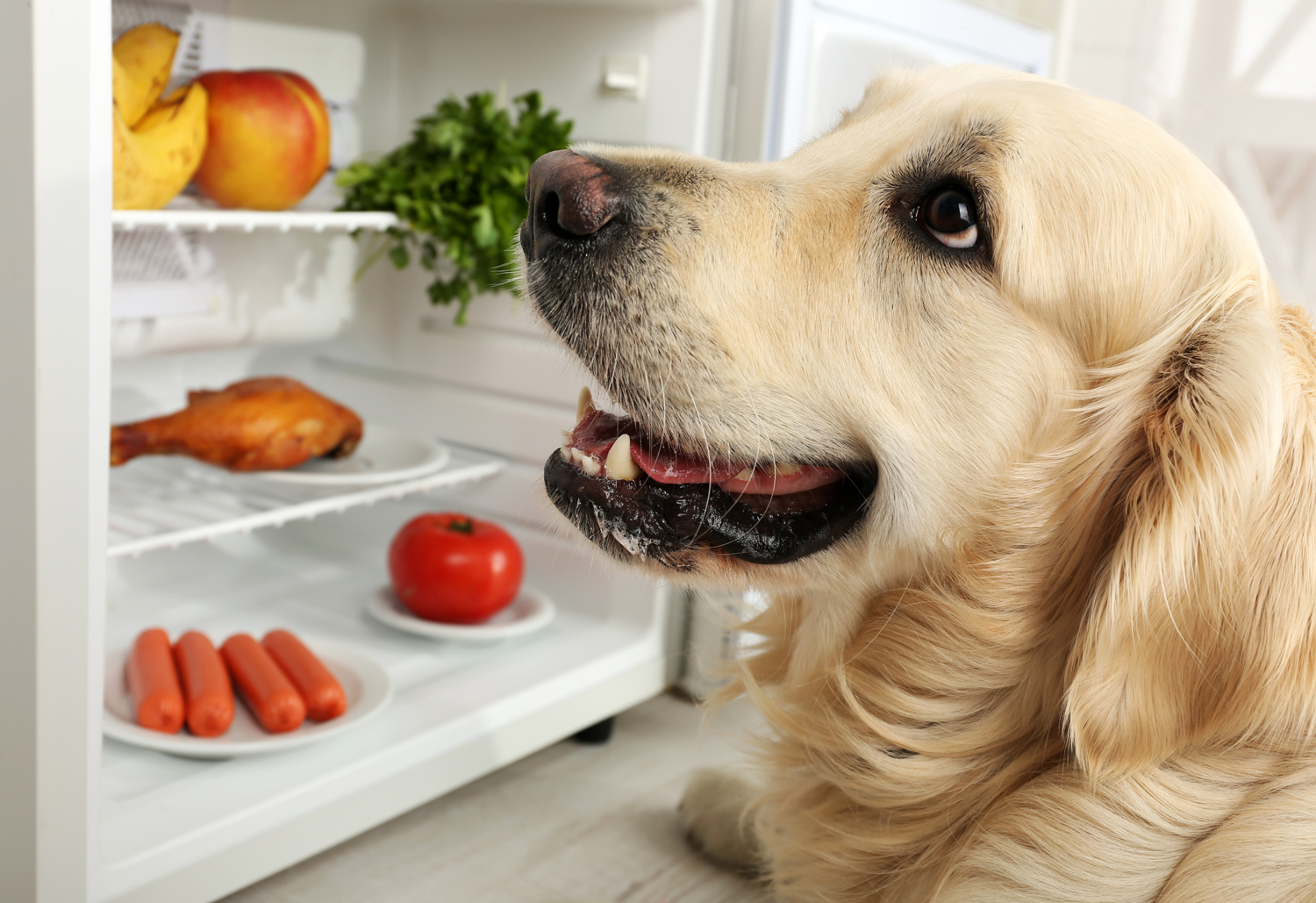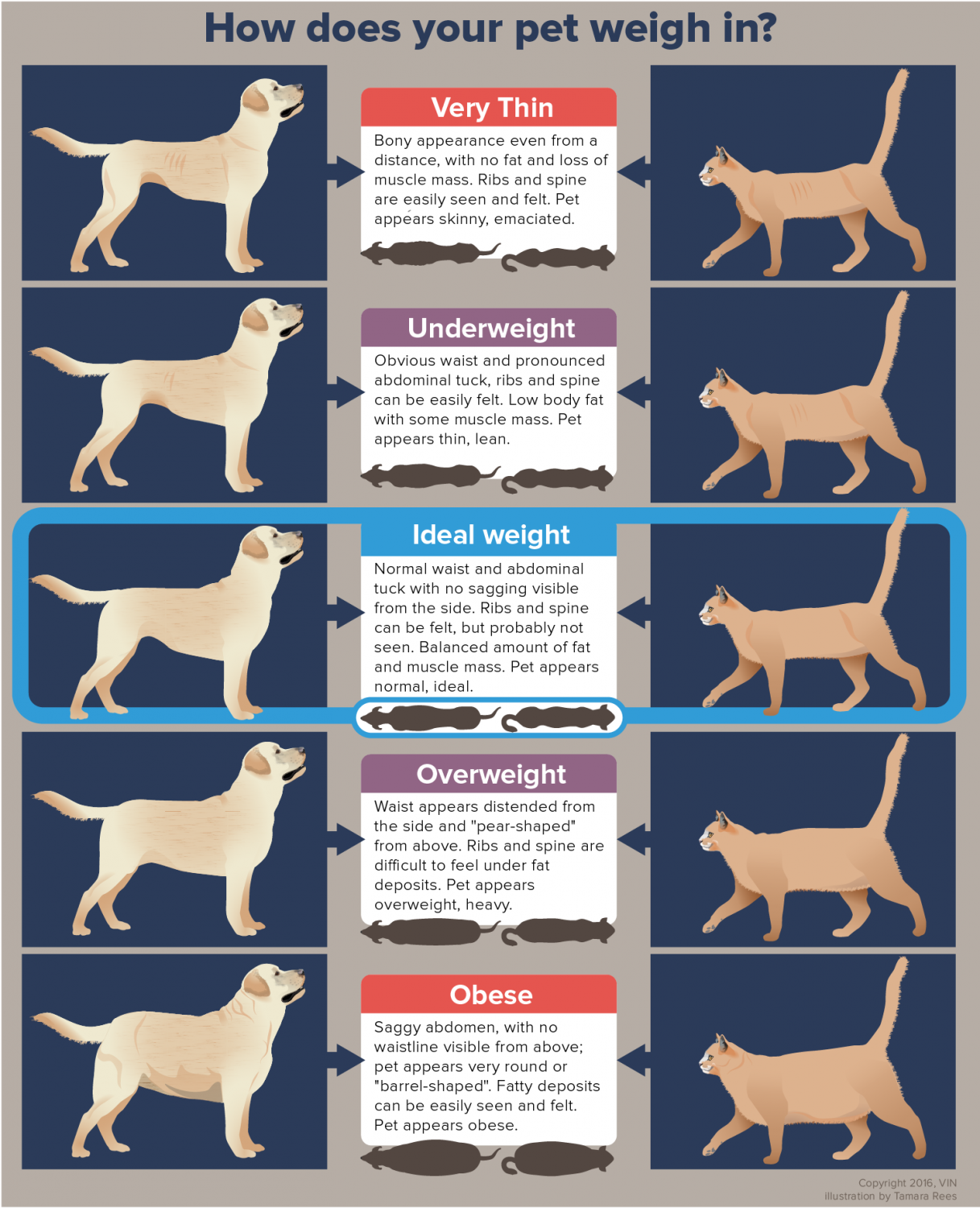|

Fat pets are unhealthy pets.
Fat pets are NOT cute! Well ok, maybe a little bit, but what is not cute is that it can affect their health. Obesity in pets is a disease, just like it is in humans.
Excess weight will put a strain your pet’s heart, liver, spine and joints. Overweight animals are at risk of developing diabetes mellitis.
Your dog is near or at their ideal weight if you can feel its ribs without having to press hard;dogs should have very little fat over their ribs. Cats are slim if they do not have a pendulous abdomen or a round shape. Dogs and cats should have a “waist” behind the ribcage when viewed from above, and an abdominal tuck in front on the hind limbs when viewed from the side.

There are 3 basic ways to get a pet to lose weight: …
1/ You can cut back on the food already being fed by 1/3. This can be a good way as long as the pet does not start mooching or stealing food due to the hunger. However, there’s a risk that if you cut back on food, you’re also limiting nutrients important to your pet’s health.
Click here to see how many calories per day your pet should be eating. Then check the web site of the food you are currently feeding to see how many calories per cup are in the food. Don’t forget to check the calories in the treats you feed as well!
2/ You can switch to a light diet in mildly restricted amounts. The disadvantage of this method is that it rarely works, as Light diets are formulated to prevent obesity (i.e. maintain the current weight) rather than achieve weight loss. I see tons of pets on “light” diets that are still fat!
3/ The best way to achieve weight loss is to feed a prescription diet that has been formulated for weight loss. These are available from veterinarians, not the pet store or grocery store. You will need to feed measured amounts rather than free choice. Splitting the recommended daily amount into 2-3 (even more for cats) daily meals will help prevent hunger and will help keep the metabolic rate higher.
Reducing diets are designed to help your animal feel “full” and satisfied, so are usually better tolerated than cutting back to 2/3 of the “old” diet.
Make sure any treats you give are low calorie. Medi-Treats, raw vegetables and air-popped popcorn are a few good choices. To prevent your family giving too many treats to your pets, I advise you place all the day’s treats in a reusable container every morning. When the container is empty, no more treats are allowed for the rest of the day.
You might even want to pre-weigh the daily ration and put in Ziploc bags labelled Mon, Tues, Wed, etc. Weighing food is more accurate than using a measuring cup when it comes to portion control.
Make sure your pet gets exercise every day. For dogs, daily walks, and playing fetch. For cats, laser pointers shone onto the floor (not the cat’s eyes), fishing pole-style toys, and playing fetch with kibble (vs eating from a bowl). You can also divide your cat’s meals into 8 portions and place 6 of them onto a shallow dish. Hide the six dishes around the house so your cat has to “hunt” for them, thus getting exercise and play every day! Try for 10 minute play sessions 2-3 times/day.
We also recommend you bring your pet for weigh-ins every 2-4 weeks, to monitor progress and optimize chances for success. That way, if your pet isn’t losing weight, the veterinary team can tweak your program and give you helpful suggestions!
|